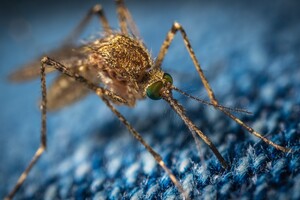In the near future, it is necessary to carefully monitor 277 known diseases.

Scientists from the University of Hawaii at Manoa and the University of Wisconsin -Madison stated that there are more than a thousand ways in which climate change can affect the development of infectious diseases. According to researchers, in the near future it will be necessary to closely monitor 277 known diseases, reports Science Alert.
Scientists studied the literature on 375 pathogens that affect humans. It turned out that 58% of them at one time or another increased their influence under the influence of climate change.
Read also: Climate change can destroy human civilization – scientists
This means that it is necessary to monitor 277 diseases, outbreaks of which may be observed in the future. And if we consider all the possible ways of spreading these pathogens due to climate change, then their possibilities are practically limitless.
Scientists note that there are too many pathogens and ways of their transmission for humanity to be able to fight against all of them at once. Instead, we can fight climate change by reducing greenhouse gas emissions.
Human-induced climate change has already made extreme weather events, such as heatwaves, wildfires and floods, more frequent and more severe. This often leads to closer contact between humans and different organisms.
In the study, the researchers examined thousands of Google Scholar articles on climate change and infectious diseases such as Zika, malaria, dengue, influenza and Ebola.
As a result, they found 3,213 examples in human history when climate change was associated with outbreaks of infectious diseases. All of these cases were linked to 286 unique pathogens, and the severity of 277 of them was exacerbated by at least one possible effect of climate change.
In addition, the authors identified 1,006 ways in which climate change could lead to outbreaks diseases.
For example, hurricanes and floods lead to displacement, during which people come into close contact with waterborne pathogens such as cholera. Fires and droughts can cause wild animals, seeking water and shelter, to make their way directly into people's homes. In this way, they bring their diseases with them.
Rising temperatures and precipitation can expand the range of vectors, increasing the risk of outbreaks of insect-borne diseases such as malaria. And the heat leads to the fact that we are in contact with water more often, which increases the risk of developing gastroenteritis.
And in this case, we are talking only about the pathogens that we know about. The COVID-19 pandemic has shown that the more we come into contact with other species, the higher the risk of disease transmission from them.
Moreover, as the permafrost melts, ancient pathogens that have remained frozen in the frozen Arctic all this time may come into contact with organisms that do not have the immunity to deal with them.
Related video
There is also the possibility that global warming will increase the impact of pathogens. In warming conditions, the life cycle of an infectious disease can accelerate, which will lead to more intensive reproduction in a shorter time. If the pathogen spreads better in the summer, then as the season extends, the risk of infection will persist longer.
See special topic: Climate change could destroy human civilization – scientists Researchers urge to prepare for the worst-case scenario of global warming. Abnormal temperatures have critically accelerated the melting of Greenland's glaciers The island lost six billion tons of water every day for a week. In the next 40 years, the heat will only intensify – WMO The temperature rises to abnormal values more and more often due to climate change. A “sand battery” was created in Finland that will help fight climate change According to the developers, the battery should solve the main problem of green energy. Antarctic's only endemic insect may disappear due to climate change Winters are getting warmer, making it harder for insects to survive.




